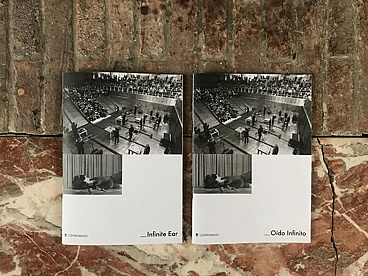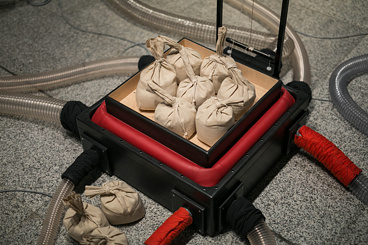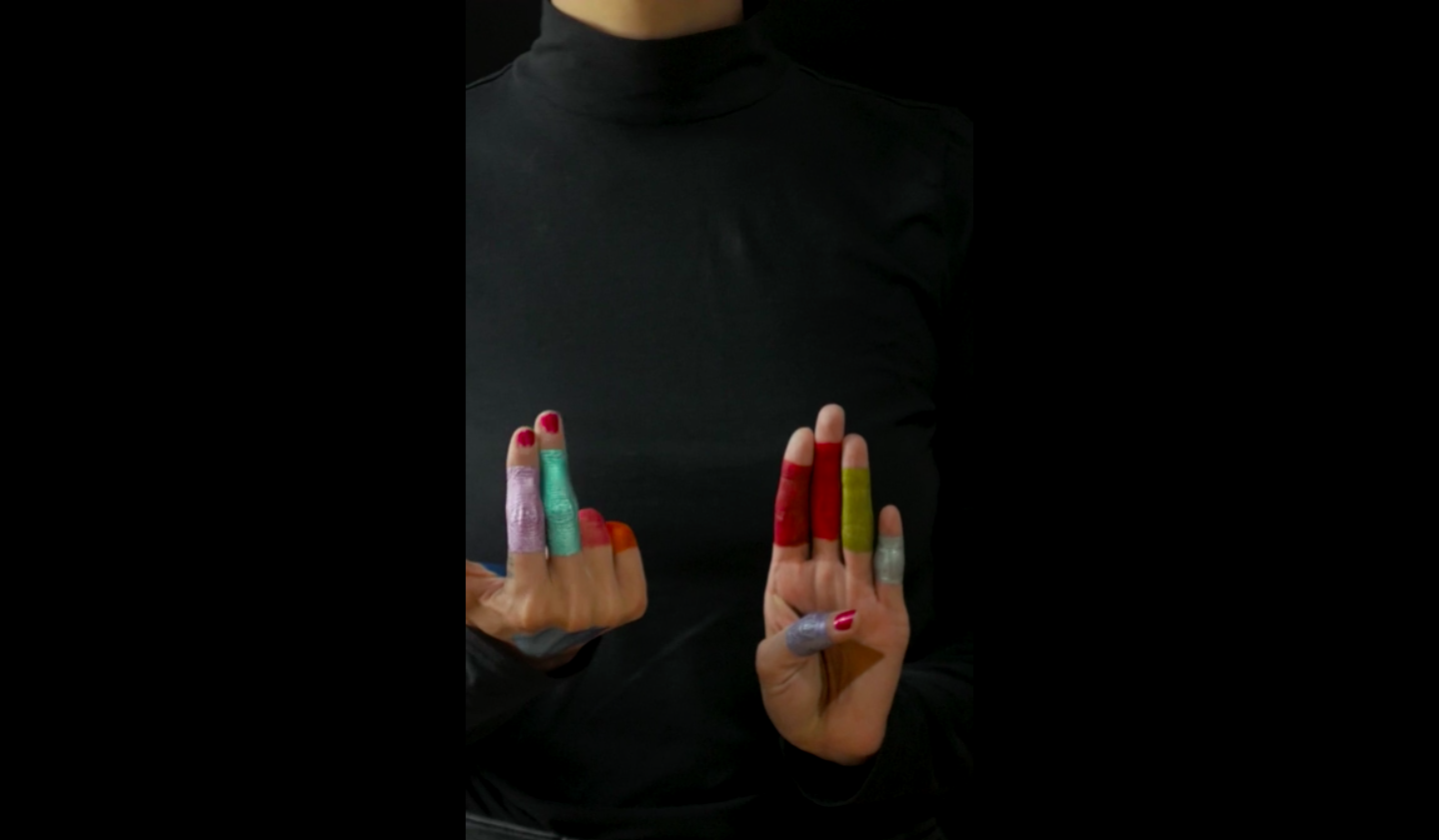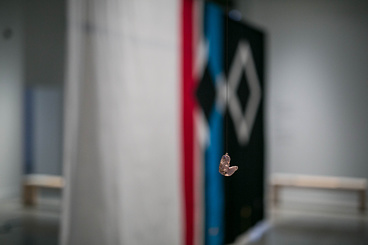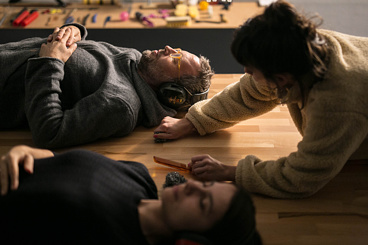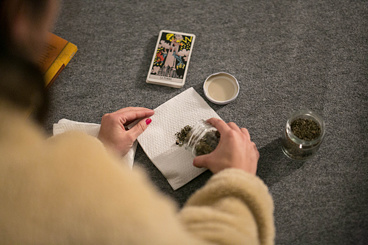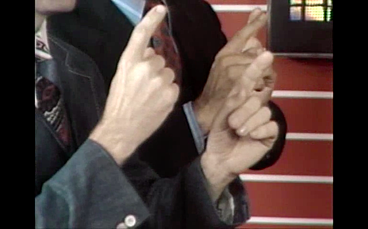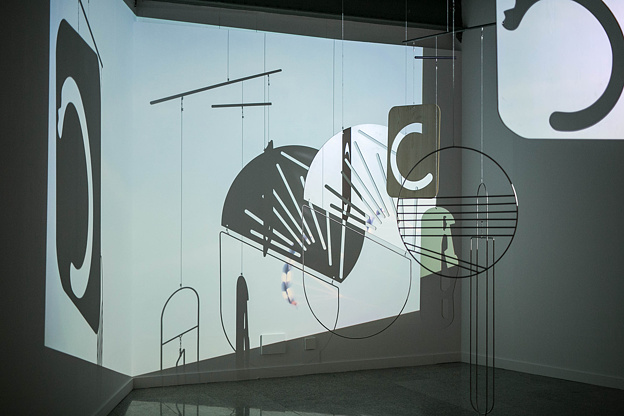
After 6 years of workshops, talks and exhibitions, Infinite Ear travels to Spain for an exhibition at CentroCentro, Madrid, where it invites us to rethink normative notions of hearing. 1
Infinite Ear is an exhibition to be heard in multiple ways. Conceived in collaboration with deaf and hard of hearing people, the project began in 2013 when Council gathered together a group of artists and scientists in a school for deaf children, around the question: what if deafness was considered an ability or expertise in hearing?
Hearing is usually understood as the ability to perceive vibrations through the ear. Hearing loss is diagnosed when a person is unable to hear a whisper in at least one ear. Hearing loss currently affects about 1.1 billion people, almost half a million of whom are considered ‘disabled’. Many scientific studies point to the intellectual, creative, and cultural benefits of Deaf-gain, recognising different perceptions of sound as vital to human diversity. So what if these sensory and cognitive differences were reframed as abilities?
The works presented in Infinite Ear invite us to expand our notion of hearing, giving the senses of touch, vision, imagination, and audition equal importance. You will feel sound differently in Tarek Atoui’s series of instruments 2 and in the film installations by Alison O’Daniel 3 4; you will read testimonies of hearing transformation by Lawrence Abu Hamdan, Vinciane Despret, Mara Mills, Louise Stern, and Sophie Woolley; and perhaps you will encounter a mediator from A (mis)reader’s Guide to Listening who will propose a journey across the exhibition through the sensorial practices by Lendl Barcelos, Valentina Desideri, Myriam Lefkowitz and Catalina Insignares. 5 6
Learning from a variety of physical and creative abilities means accepting that each one of us perceives a world from which a part is missing. As in Robert Ashley’s film Title Withdrawn 7 , Infinite Ear considers these missing parts as spaces left to the imagination. Can we try to suspend the desire for ‘full understanding’ and privilege the work of our imagination and our senses? Beyond the ‘able-bodied’ and the ‘disabled,’ there are thousands of capacities, and each of them is a specific ecosystem of senses. We dreamed of an exhibition where each hearing ability would be honoured.
Welcome to Infinite Ear. 8
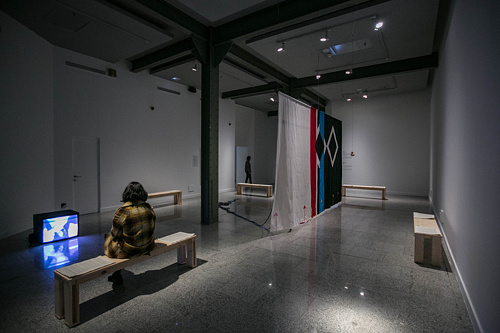
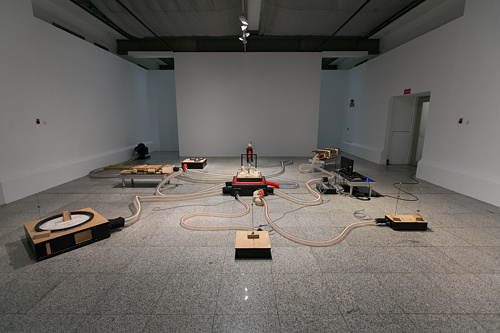
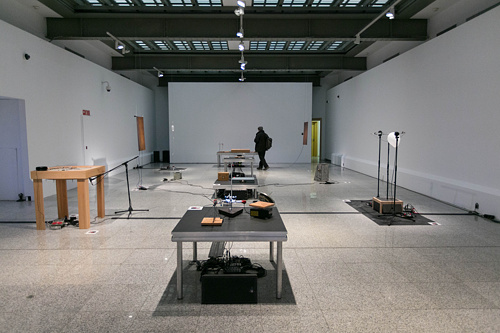
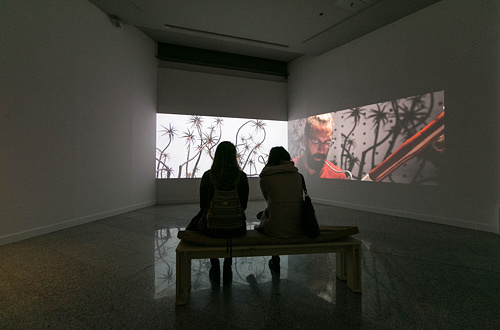
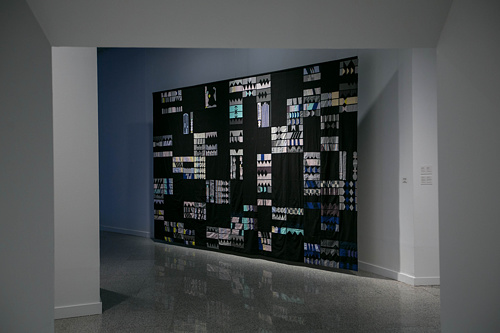
Infinite Ear is an exhibition by Council
With
- Robert Ashley
- Tarek Atoui
- Lendl Barcelos
- Catalina Insignares
- Valentina Desideri
- Myriam Lefkowitz
- Mattin
- Alison O'Daniel
WITHIN
- Instruments and performances
- conceived by
- Tarek Atoui
- with
- Julia Alsarraf
- Daniel Araya
- Johannes Goebel
- Kvadrat
- Jeff Lubow
- Thierry Madiot
- Perrin Meyer
- Greg Niemeyer
- Quartet Mats Lindström
- Espen Sommer Eide
- Igor Porte
- Léo Maurel
- Vincent Martial
A (MIS)READER'S GUIDE TO LISTENING
- Collective and individual sensorial exercises collected by
- Lendl Barcelos
- Valentina Desideri
- Myriam Lefkowitz
in collaboration with - Catalina Insignares
NEW LISTENERS
- Films and installation by
- Alison O'Daniel
TITLE WITHDRAWN
- A film by
- Robert Ashley
INFINITE EAR: PORTRAITS
- texts by
- Lawrence Abu Hamdan
- Vinciane Despret
- Mara Mills
- Louise Stern
- Sophie Woolley
Infinite Ear
CentroCentro
Madrid, Spain
24 Oct 2019 – 12 Jan 2020
The exhibition in Madrid is hosted by CentroCentro upon invitation of artistic director Soledad Gutierrez and produced by Tevi de la Torre.
LOANS FROM MUSEUMS, GALLERIES, COLLECTIONS
- CNAP
- Galerie Chantal Crousel
- Kurimanzutto Gallery
- Nouveau Musée National de Monaco
- Mimi Johnson
Top image: Alison O'Daniel, Nyke and the New York Kite Enthusiasts in Santa Monica #2, 2018, installation view at CentroCentro All ph. credits Lukas Michalak for CentroCentro
